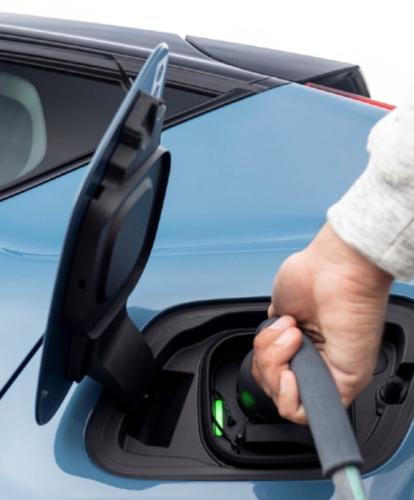Volvo Cars has published a report into the overall life cycle carbon emissions of its latest fully electric car, the Volvo C40 Recharge, which shows the huge potential CO2 reductions if a car is built and charged using clean energy sources.
One of the key findings is that even when the C40 Recharge is charged with electricity from the global energy mix, its carbon footprint, including production and recycling, is lower than that of a combustion engine.
The release of the report comes as heads of government and industry leaders are meeting at the UN COP26 climate summit in Glasgow to discuss and announce revised plans for reductions in carbon emissions to fight climate change.
Volvo Cars is aiming to become a fully electric car maker by 2030 and plans to roll out a whole new family of pure electric cars in coming years. This is part of its ambition to become a climate neutral company by 2040, as it works to consistently cut carbon emissions across its business.
However, the company emphasised that it will need help from governments and the energy sector, if its cars are to realise their full carbon reduction potential. As the new Life Cycle Assessment (LCA) report for the Volvo C40 Recharge shows, the availability of clean energy for both manufacturing and charging an electric Volvo makes a huge difference in terms of CO2 impact.
When a driver charges a C40 Recharge with clean energy, such as wind power, the CO2 life cycle impact of the car is less than half that of a traditional, combustion-engine powered Volvo XC40. When charging with electricity generated through fossil fuels, that difference becomes much smaller.
“We made a conscious strategic decision to become a fully electric car maker and an industry leader, but we can’t make the transition to climate neutrality alone,” said Håkan Samuelsson, chief executive.
“We need governments and energy firms around the globe to step up their investments in clean energy capacity and related charging infrastructure, so fully electric cars can truly fulfil their promise of cleaner mobility.”
The company’s views are echoed in the 2021 World Energy Investment report by the International Energy Agency (IEA), which points out that while clean energy investments are on “a moderate upswing”, those planned investments “remain far below what is required to avoid severe impacts from climate change”.
According to the IEA report, global clean energy investments “would need to double in the 2020s to maintain temperatures well below a 2°C rise and more than triple in order to keep the door open for a 1.5°C stabilisation” of global temperature rises.
The LCA report for the C40 Recharge shows that when charging it with electricity generated from clean sources, its lifecycle CO2 footprint comes down to approximately 27 tonnes of CO2, compared to 59 tonnes for an XC40 compact SUV powered by a combustion engine.
However, when drivers charge their C40 Recharge using an average global energy mix (which is generated for around 60 per cent from fossil fuels), the car’s life cycle CO2 tonnage can increase to as much as 50 tonnes, significantly reducing the environmental gains versus a traditionally powered car.



